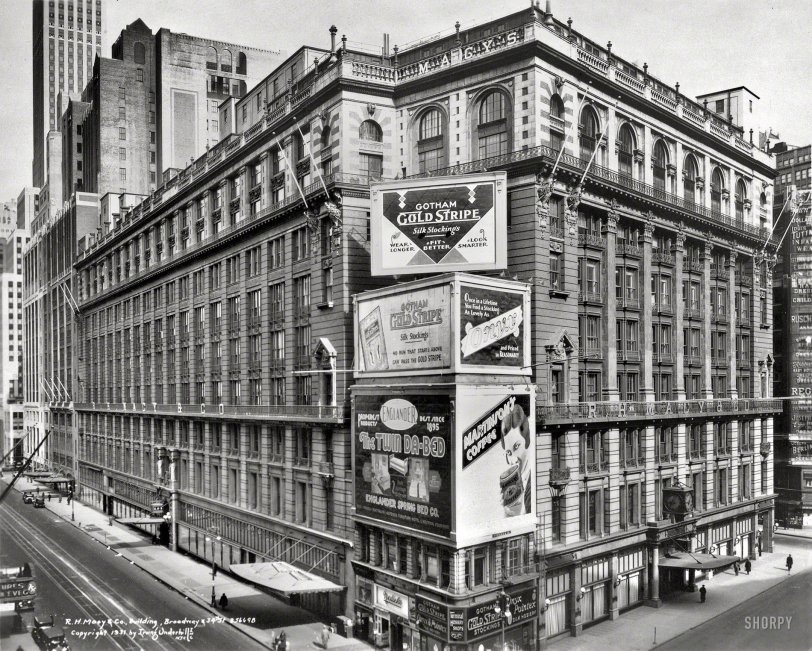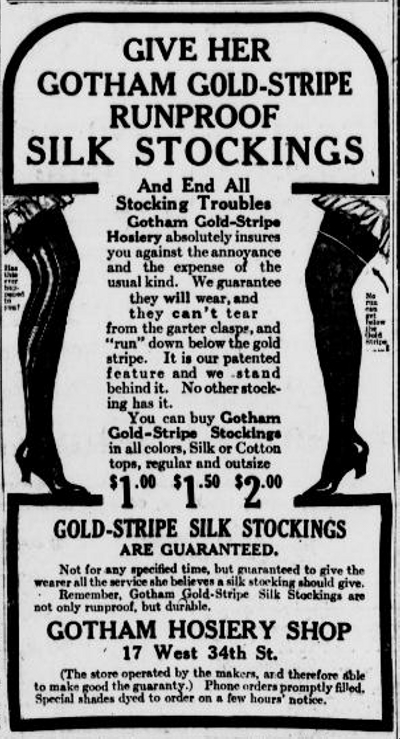


Framed or unframed, desk size to sofa size, printed by us in Arizona and Alabama since 2007. Explore now.
Shorpy is funded by you. Patreon contributors get an ad-free experience.
Learn more.

- Freeze Frame
- Texas Flyer wanted
- Just a Year Too Soon
- WWII -- Replacing men with women at the railroad crossing.
- Yes, Icing
- You kids drive me nuts!
- NOT An Easy Job
- I wonder
- Just add window boxes
- Icing Platform?
- Indiana Harbor Belt abides
- Freezing haze
- Corrections (for those who care)
- C&NW at Nelson
- Fallen Flags
- A dangerous job made worse
- Water Stop
- Passenger trains have right of way over freights?
- Coal
- Never ceases to amaze me.
- Still chuggin' (in model form)
- Great shot
- Westerly Breeze
- For the men, a trapeze
- Tickled
- Sense of loneliness ...
- 2 cents
- Charm City
- What an Outrage
- Brighton Park
Print Emporium
Macy's: 1931

New York circa 1931. "R.H. Macy & Co. Building, Broadway & 34th Street." The original "big box" retailer. Irving Underhill photo. View full size.
Demonic Coffee
Martinson's coffee drinkers get one free exorcism per purchase. Whats up with the crazy eyes?
Air Rights
The notch in the corner of the building was needed so as to not infringe the "air rights" of the hard nosed owner of the corner store. The signs may hang in the air rights, but they are aren't attached there.
"Air rights" are part of any land you own: they extend from the ground upward "forever." It's not uncommon for building owners to sell or lease air rights to others for sundry building projects.
Corner building
I'm the great grandnephew of Robert Smith, who came to own the corner building and tried to use it as leverage in various negotiations with the Strauss family of Macy's.
He eventually sold the building in 1911 to a group who has not sold it to Macy's at this point. Here's an old New York Times article about the issue.
Robert Smith made a self-published memoir, but alas I don't have a scanner here to include the pages about this issue.
Good Like Nedicks
The Nedicks storefront seen on the 34th Street side of the Macys building was one of a chain of Hot Dog stands scattered throughout the whole city. They served an almost tasteless sausage on a bun complemented by an even worse orange drink. In the post WW2 years they sponsored the NY Knicks basketball games on radio.The play by play guy was the former Track & Field Star, Marty Glickman, who would call the games. Glickman would say after any Knick basket "Good like Nedicks". It became a schoolyard chant.
Macy's without a Macy
R. H. Macy died in 1877. After passing through several family hands, R. H. Macy and Company was acquired by German immigrant brothers Isidor and Nathan Straus in 1895. They built this flagship Herald Square store, which opened in 1902. Isidor and his devoted wife Ida perished in the early morning April 15, 1912, sinking of the RMS Titanic. Nathan was also co-owner of another large NYC department store, Abraham & Straus.
Those Eyes
Anyone notice those "evil" eyes on that coffee billboard?
Not only runproof, but durable
From The Evening World, Friday, December 6, 1912.

The alcove store at the very corner.
You might notice the alcove store at the very corner. This land owner refused to budge and Macy's giant department store was built up around it where it exists today. I don't know the circumstances of Macy's using its upper levels for dramatic signage.
Just a half block downtown was Gimbel's, Macy's primary competitor. Gimbel's department store was replaced in the 80's with an update as the A+S mall. (Abraham and Straus). Didn't the founder go down in the Titanic?
Small-box rival
The notch in the corner of Macy's is or was the Siegel-Cooper Dry Goods Store, which bought the corner lot in an attempt to squelch their larger rival's plans. No luck: Macy's went ahead anyway. "Holdouts!" a 1984 book by Andrew Alpern and Seymour Durst, tells the story well.
























On Shorpy:
Today’s Top 5